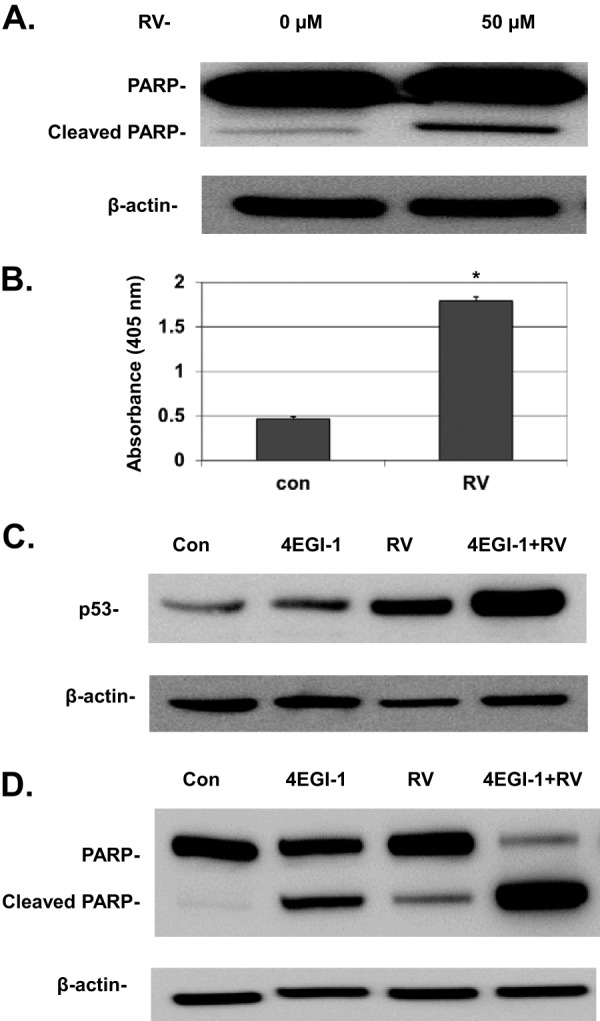FIG 6.

(A) Resveratrol (RV) induces PARP cleavage in LNCaP cells. Subconfluent cells were treated with 50 μM resveratrol for 24 h. After treatment, both floating and attached cells were harvested and lysed. Equal amounts of protein were then subjected to SDS-PAGE and transferred to PVDF membranes. PARP, cleaved PARP, and β-actin were detected. (B) Resveratrol causes DNA fragmentation in LNCaP cells. Subconfluent cells were treated with 50 μM resveratrol for 24 h, and then fragmented DNA was measured by an ELISA cell death assay as described in Materials and Methods. The results are averages ± the SEM from three repeats (*, P < 0.05). (C) 4EGI-1 and resveratrol treatment leads to a much stronger induction of p53 than 4EGI-1 or resveratrol alone. Subconfluent LNCaP cells were treated with either 50 μM 4EGI-1, 50 μM resveratrol, or both for 4 h. After treatment, the cells were lysed. p53 and β-actin were detected following SDS-PAGE and Western blotting. (D) 4EGI-1 and resveratrol work synergistically to induce apoptosis in LNCaP cells. Subconfluent cells were treated for 24 h with either 50 μM 4EGI-1, 50 μM resveratrol, or both. Both floating and attached cells were collected and lysed. Equal amounts of protein were subjected to SDS-PAGE and transferred to a PVDF membrane. PARP, cleaved PARP, and β-actin were detected. The results in panels A to D are representative of three individual repeats.
